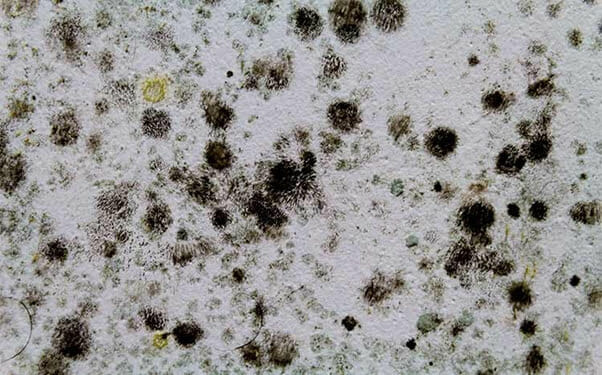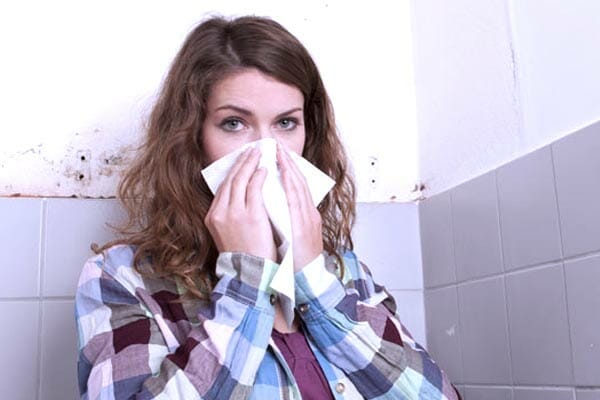The proliferation of mold in a home is unwelcome. It leads to property damage through the creation of extensive stains and discoloration. Moreover, it can trigger serious allergic reactions in some people.
Strictly speaking, there is really no difference between regular mold and black mold. With over 100,000 species of mold in existence, Stachybotrys chartarum (aka black mold) is a common variety and is identifiable by its black color. Like all mold found in your home, black mold can be detrimental to your health and should be remediated when identified.
Here is what you should know about black mold, toxic mold, and what you can do to get rid of it from your home.
What we cover
ToggleWhich is worse, regular mold or black mold?

Just because mold is black in color does not mean that it is highly toxic. Also, just because mold is regular-looking does not mean that it is non-toxic. In short, toxic mold comes in different colors and so the color is not a great way of gauging whether the mold is toxic or not.
Furthermore, given that all mold release spores, they can trigger allergic reactions. As a result, they can cause worsening symptoms in people with respiratory conditions like asthma. And for those who are allergic to mold spores, they all can cause skin and eye irritation.
However, it is important to note that people usually use the term black mold to refer to Stachybotrys chartarum. This mold species is notorious for producing mycotoxins.
These toxins can then trigger complications like chronic sinusitis, nonstop headaches, breathing troubles, coughing, and other respiratory complications. Severe complications can also develop in some people.
Therefore, when comparing Stachybotrys chartarum, a mold species that is usually black in color, to other commonly occurring mold types, it is way more toxic.
How can you tell if mold is toxic?
At-home testing kit
The most effective way to tell if mold is toxic is to use an at-home mold testing kit. When you purchase these kits, you will receive a collection kit that allows you to collect samples of the mold. Some even allow for air sample collection in order to facilitate air tests.
After collecting the sample, you place it in a secure bag and then seal it. You then send the sample back to the testing company where they will test the samples in a laboratory. Thereafter, they will send a report back to you detailing the nature of the mold and whether it is toxic or not.
Mold testing contractors
If you don’t want to do the collection and testing, you can simply hire a company that offers mold testing services. These companies will typically send their own technicians to do the sample collection. They will then test the mold in a lab and then give you their findings. They also tend to give you recommendations on the precautions that you should take and how to effectively remove them.
Observation
The most common way in which toxic mold is discovered is by observing its effects. If people staying in a home are getting sick or end up with respiratory complications, then any mold existing in the home is likely to blame. This is so especially if there is no other reasonable explanation for allergic reactions, worsening skin and eye irritations, and other complications.
In such a case, the mold can be presumed to be toxic. A lab test can thereafter confirm whether this is the case or not.

How to spot mold?
Stains
You can spot mold by the discolorations and stains that they create on surfaces. These discolorations and stains can be white, black, green, yellow, pink, or black. Therefore, if you notice such discolorations and stains — especially on wet or damp surfaces — chances are that there is a mold infestation.
Smell
You can also spot mold by smell. Mold tends to give off a musty smell. Therefore, if you notice that your home is suddenly flooded with a musty smell, chances are that mold is to blame.
Testing
However, since not every discoloration or stain that occurs in your home is caused by mold, you can go a step further. You can order an at-home mold testing kit online.
Use the collection kit that they send to you to collect a sample of the substance that you are suspecting is mold. When you send it back, they will test it and then tell you whether it is mold growth. Some companies can even tell you which mold species you are dealing with.
Mold remediation services near you
If you need help getting rid of mold in your home, HomeGardenGuides.com should be your first stop. It offers a free service that quickly matches you with the top-voted local mold remediation contractors.
Using the website, you can get 3 estimates fast by real certified experts in your area in just 2 minutes. Here is how it works.
You scroll to the top of the page and enter your Zip code.
Answer questions about your mold remediation needs
Your details will be forwarded to three local experts.
You will then receive a price estimate for the job and some friendly advice.
IMPORTANT: There is no obligation to hire. This is a free tool and service to be used at your pleasure.

Testing for toxic mold
You can test for toxic mold in your home by using at-home mold testing kits. These kits are affordable, with their prices ranging from $40 to $200. To know whether you have toxic mold in your home, simply collect mold samples as instructed and then send them back to the testing company. They will test the samples in a lab and then send you the results.
There are companies that specialize in conducting mold assessment tests. When you hire these companies, they will be able to tell you whether you have toxic mold in your home. They can identify toxic mold through observation by relying on their wealth of experience and expertise. They can also take samples to their labs for analysis.
Blood tests are also effective at determining whether the toxic mold is present in a home. They come in handy in cases where loved ones are getting sick and mold is suspected. With a blood test, a doctor can check for toxin traces. The presence of certain antibodies in the blood can also be an indication that what you are dealing with is toxic mold.
How much does mold removal cost?
The cost of mold removal usually varies depending on where the mold is located, the size of the area that has to be worked on, and how extensive the mold growth is. Factors like location and the techniques used to remove mold, also play a role in determining the cost of removal. Also, if you opt for DIY removal, your costs will be limited to only material costs.
Here is an overview of how much it generally costs to remove mold from a home.
| Service | Cost |
|---|---|
| Average mold removal cost | $871 |
| Mold removal cost range | $250 - $3,500 |
| The average cost of mold remediation per square foot | $10 - $25 |
Is black mold worse than green mold?
No, black mold is not worse than green mold. There are mold species that are green in color and which can produce mycotoxins just as there are black mold species that produce mycotoxins. It is also true that just as there is green mold that isn’t harmless, there are black mold species that aren’t toxic.
In short, color isn’t a reliable way of telling which type of mold is worse than the other. Toxic mold comes in all colors, and so does nontoxic mold. Things get even more complicated when you find out that even the same species of mold can present in different colors depending on what they feed on and the environment in which they grow.
What’s the difference between mold and mildew?
The main difference between mold and mildew lies in the way they grow. While mold tends to penetrate deep into the surface on which it grows, mildew tends to grow horizontally and remain on the surface. This makes mildew easier to clean than mold.
You can also distinguish the two by examining their texture. Mold tends to be slimy or fuzzy. Mildew on the other hand has a powdery or a fluffy feel.
How can you tell mold is black mold?
You can tell that mold is black mold by simply looking at it. Black mold is black in color and so it will be obvious.
However, since people typically refer to Stachybotrys chartarum as black mold, simply looking at it will not be enough to identify it. Thousands of mold species are black in color, and so taking the sample to a laboratory and getting it analyzed is the only way to be sure that you are dealing with Stachybotrys chartarum mold.
FAQ's
Can mold kill you?
Cases of mold killing a person are almost nonexistent.
To babies, people with extremely weakened immune systems, old people, or those suffering from chronic respiratory complications, the allergic reactions that mold triggers can prove to be life-threatening. However, drying from mold exposure is something that is unlikely to happen. This is so even in cases where toxic mold is involved.
Will bleach kill black mold?
Yes, bleach kills mold and this includes black mold. However, using bleach as a method of killing black mold is not recommended by the United States Environmental Protection Agency. This has to do with its effect on the environment. It is also not ideal for use on porous materials since it doesn’t get absorbed as easily. This makes it great for only cleaning surface mold.
Should I DIY or use a pro?
You should DIY a mold removal job if you are dealing with an area that is less than 10 square feet. It will be cheaper, and you also won’t have to deal with the inconvenience of scheduling and waiting for appointments.
However, if the area that you are working on is larger than 10 square feet, then using a professional mold removal service is always recommended. This is because these companies have the expertise, experience, and skills to deal effectively with mold in large areas.
Using them will guarantee better mold remediation results. It will also minimize the risks of cross-contamination. And while they cost a little bit more than just doing it yourself, the peace of mind, and the time-saving benefit that comes with using professionals, are usually worth it.
Can mold dry out and die?
No, mold cannot dry out and die. When it doesn’t have access to moisture, it simply dries and remains dormant. As a result, as soon as it is exposed to moisture, it will simply become active and start growing back.
It is because of this that homeowners are usually advised to ensure that they kill the mold. And after killing it, removing it is also recommended.
Will a dehumidifier get rid of mold?
No, a dehumidifier cannot get rid of mold. But this does not mean that it is useless as far as mold is concerned. This is because in homes that are located in high-humidity areas, having a dehumidifier will reduce the home’s internal humidity. This will deprive mold spores of a readily available moisture source, and this will discourage mold growth.
Given that toxic mold comes in different colors — and not just black — it is always advisable that you kill and remove mold as soon as you notice it. And even if the mold in your house turns out to be nontoxic, swinging into action immediately is still recommended because of the serious allergic reactions that their spores can trigger.














